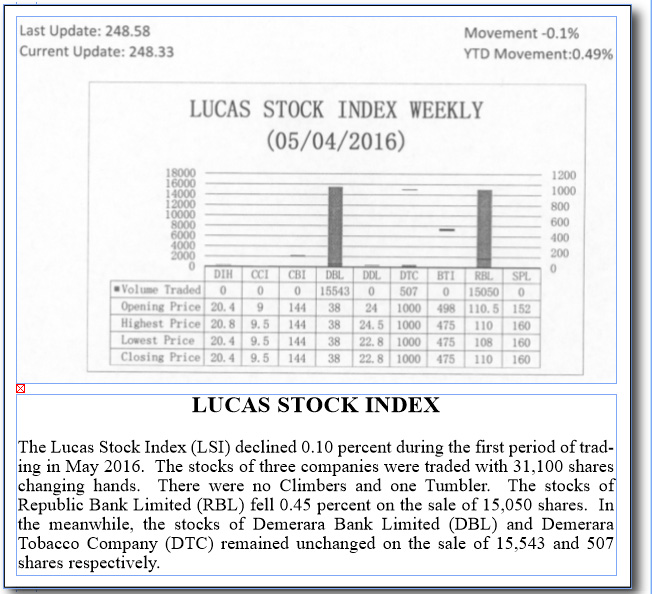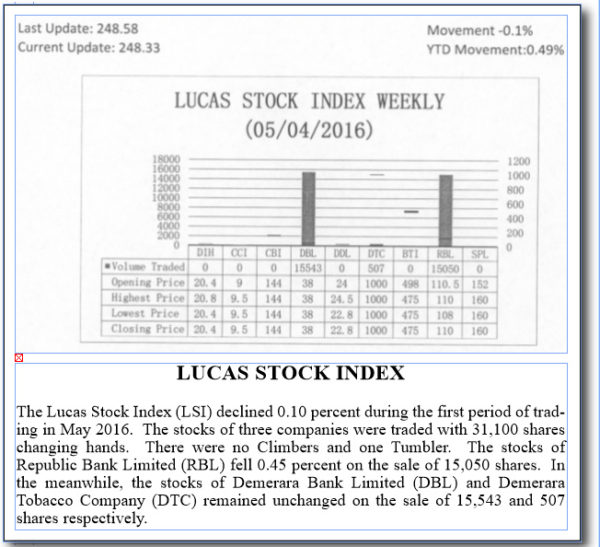Global demand
The world is bombarded with claims of free trade and its virtues. Globalization is often advanced as the reason for the need for open trade. Global demand for goods and services must be satisfied and the advocates of globalization feel that it could only be done through free trade ‒ the lowering of tariffs or removal of tariff and non-tariff barriers. The debate is often about the pros and cons about mercantilism and liberalism. People are often left with the impression that mercantilism has been cast aside in favour of liberalism. This article seeks to determine if the world has truly abandoned the mercantilist principles of international trade.
Reigning philosophy
 While academics discuss three theories of international trade, the dominant two theories are mercantilism and liberalism. Under mercantilism, the principal actor in trade is the state. The reigning philosophy is that the state needs to be at the centre of international trade in order to ensure that the country has enough resources to take care of its domestic needs. The principal trade objective of the state was to enable the country to export more than it imported. In other words, achieving a trade surplus was very important to mercantilist thinking. State intervention was necessary to make that happen. Governments used customs duties or tariffs to achieve their goals. Trade in manufacturing because of its value-added benefits was seen as better than trade in raw materials or primary commodities. In some cases, they used extreme physical measures such as restricting or outright banning of goods in order to give their local industries a chance to avoid competition from foreign producers. Governments obviously felt that they could gain more from taxing the incomes of domestic producers than from taxing the imports coming into the country.
While academics discuss three theories of international trade, the dominant two theories are mercantilism and liberalism. Under mercantilism, the principal actor in trade is the state. The reigning philosophy is that the state needs to be at the centre of international trade in order to ensure that the country has enough resources to take care of its domestic needs. The principal trade objective of the state was to enable the country to export more than it imported. In other words, achieving a trade surplus was very important to mercantilist thinking. State intervention was necessary to make that happen. Governments used customs duties or tariffs to achieve their goals. Trade in manufacturing because of its value-added benefits was seen as better than trade in raw materials or primary commodities. In some cases, they used extreme physical measures such as restricting or outright banning of goods in order to give their local industries a chance to avoid competition from foreign producers. Governments obviously felt that they could gain more from taxing the incomes of domestic producers than from taxing the imports coming into the country.
The other dominant theory of international trade is that of liberalism. Liberalism as it applies to trade could be seen as the opposite of mercantilism. Liberalism holds the view that governments should not interfere or should be involved as little as possible in international trade. Tariffs should be low if not eliminated altogether. The accumulation of wealth should be for the benefit of the individual involved in international trade and not the state. In the liberalist view of things, being able to trade was more important than what was being traded. This thought is driven by a belief in the welfare consequences of resource allocation than in its distributional effects. In other words, everyone would be better off since they would have access to a wider choice of consumer items than if trade were restricted. If a country could not produce a commodity efficiently, then it should import it. Tariff and non-tariff barriers therefore should not be used to restrict trade, for in doing so, the quality of life of people was being restricted or diminished.
Confused
One could easily get confused as to whether mercantilist or liberalist trade policies are being pursued in global trading arrangements when the news media report that two governments have entered into a bilateral trade agreement. It is easy to believe that the state was at the centre of the trade transactions that would ensue from the penning of the agreement. Very often it is a combination of mercantilism and liberalism that enters the trade arrangement between two countries. An obvious combination of mercantilism and liberalism is the involvement of a state enterprise in the international trade transaction, even though a private company might be involved at the other end of the deal. Export of sugar by GuySuCo would be seen as mercantilist trade by Guyana while the import of the sugar would be seen as liberalist if purchased by a private company. The purchase of oil by Guyoil which is a state-owned company would be seen as mercantilist while the sale of oil by a private company would qualify as liberalist since it would benefit private individuals. In both instances, the financial position and interest of the state are affected.
What should be obvious is that no trader will turn away an opportunity to make a sale, even if the buyer is a government. In some cases, companies are partly owned by the government and they trade with both public and private companies. So, distinguishing trade as mercantilist and liberalist is not as cut and dried as the theories would lead one to believe. For many countries, particularly developing countries, trade is a matter of survival. Without trade, Guyana could not produce many of the products that come from its production structure. The importance of international trade could be evaluated from several perspectives.
Factor deficiencies
Proponents of the value of trade would argue that factor deficiencies drive countries to trade and the experience of Guyana bears that argument out. Many of the goods produced in Guyana depend on inputs that are not produced in Guyana. Building construction serves as a good example. Building construction needs things like cranes, pile-drivers, nails, screws, hammers, saws and sandpaper which are not produced in Guyana. The inputs must be imported if no one is willing to dedicate the time and energy to undertaking research to find useful alternatives to the various inputs. The practical value of trade is also seen in the issue of employment. Without domestic production, it is difficult to create jobs. Domestic production relies on the combination of domestic products and foreign products. Again, building construction offers a good example. Without imports of heavy machinery and other resources, building construction could not take place at the rate that it has and make jobs available to Guyanese and other workers.
Merchandise trade
The examples above identify merchandise or goods as part of the foreign trade. Merchandise trade makes up 80 per cent of global trade while services account for 20 per cent. Within the merchandise trade, manufactured goods lead the way, followed by mining products and fuels, with agriculture bringing up the rear. When one looks at the breakdown of the trade, it is hard not to see and share some of the mercantilist viewpoints about trade. One must be reminded that mercantilists believe that it is better to trade in manufactured goods than in agricultural goods. The data provided by the World Trade Organization (WTO) seems to support that view. Manufactures make up two-thirds of the merchandise trade and more than 50 per cent of trade in goods and services. In addition, manufactured products contain far more value-added components and bring greater amounts of revenue to exporting countries. This point is emphasized when the value of semi-manufactured items are compared to the value of fully manufactured items. Semi-manufactures consisted of US$1.2 trillion in value in 2014 while fully manufactured goods consisted of US$1.5 to US$6 trillion in value.
The most valuable manufactured products are machinery and transport equipment. They account for more than half of the goods exported. The next valuable set of goods is chemicals which account for 17 per cent of the manufactured goods traded. The manufactured goods with the lowest value is clothing. It contributes less than half of a trillion dollars to world exports. The trade in clothing vis-à-vis other manufactures highlights another very important factor in the debate about mercantilism and liberalism. Goods which are produced with low technology do not bring as much revenue as manufactured items with a high content of high or sophisticated technology.
Pattern of trade
The pattern of trade does not provide the type of information to clarify the discussion between mercantilism and liberalism. It is disclosed by the WTO that most merchandise trade originates in the developed countries. They export 52 per cent of all goods while the countries in the developing world are responsible for originating 44 per cent of the trade. Many developed countries produce sophisticated items which are not traded freely. It is known that some developed countries restrict the trade of items that are deemed sensitive. For example, the European Union (EU) restricts trade in weapons, ammunition and what it calls dual-use goods. These are goods that have both civilian and military utility.
Of the exports that originate in developing countries, the bulk of it is for other developing countries. These transactions are also described as South-South trade. According to the data of the WTO, 52 per cent of the exports of developing countries go to other developing countries. The majority of the trade involves countries in Asia which receive 35 per cent of the merchandise exports. The remaining 17 per cent is divided up between Latin America and the Caribbean, the Middle East and Africa. Africa gets five per cent of the share while the other two regions receive six per cent each.
Governance
Perhaps the most important argument of liberalism in international trade is the way trade is governed. At least that is the attitude towards governance. The responsibility for governance falls to the WTO and the governance is based on five principles. These principles are free trade, predictable trade, competitive trade, non-discriminatory trade and beneficial trade. The first three principles deal with tariff measures. Free trade calls for the lowering or removal of tariffs. Predictable trade calls for certainty about the tariffs. In other words, tariff rates should not change arbitrarily and leave exporters and importers in the lurch. The trading system relies on a measure called binding to gain assurances about the stability of tariff rates. Competitive trade is also encouraged through predictable trade and non-discriminatory trade.
Cancelled out
The principles of non-discriminatory trade and beneficial trade almost cancel each other out. Non-discriminatory trade utilizes the most favoured nation (MFN) clause. This principle simply asks countries to treat its trading partners fairly. A country therefore should not charge one country a given tariff rate on one item and then charge a different rate to another country on the same item. The exception is made under the principle of beneficial treatment. Developing countries do not always have to adhere to the MFN principle since they cannot compete in the same way as the more advanced economies. Non-discrimination is cancelled out by beneficial trade. Since the majority of trading nations are developing countries, mercantilism appears to dominate international trade and leaves the view that “totally” free trade is a myth.







